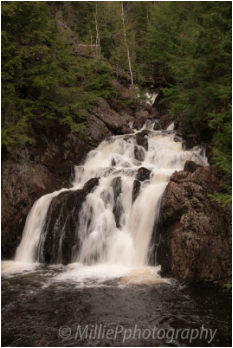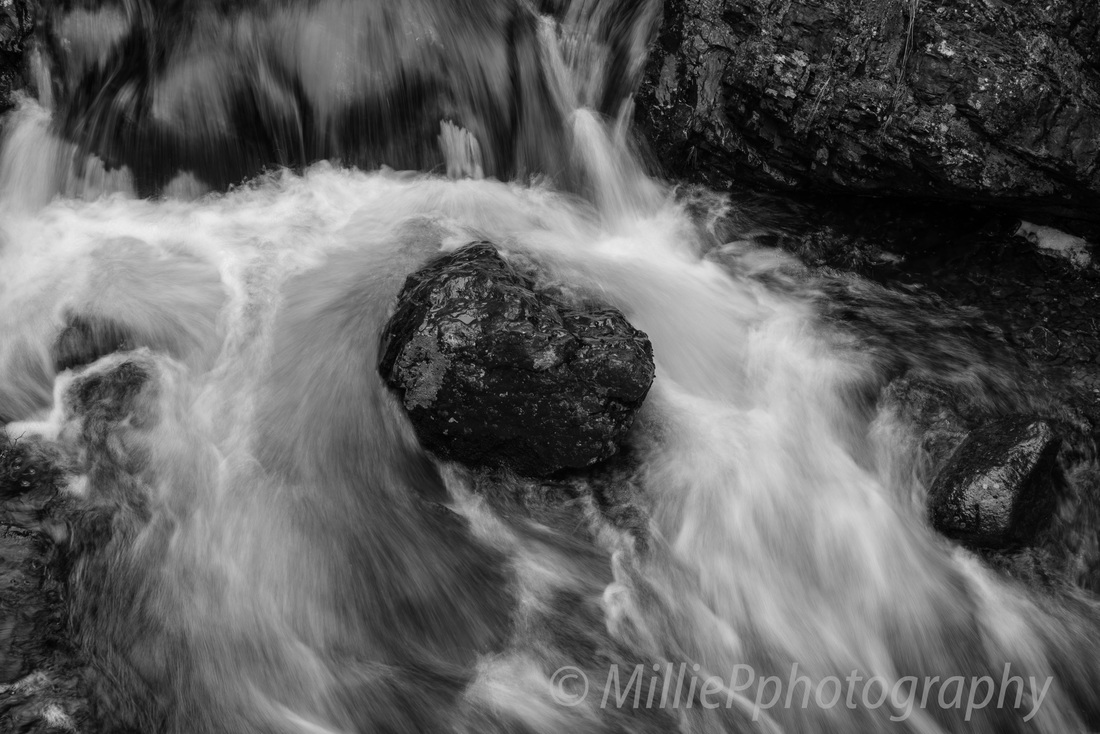|
Have you ever just sat in front of a waterfall and let you be awestruck by the rushing water or hypnotized by the sound of the cascading water falling into a stream? Whether the waterfalls are small, wide, long or skinny they all seem to have the ability to bring a sense of “amazement” to each one of us. Photographing beautiful waterfalls can be challenging projects depending on what image you are trying to capture. It may seem easy to photograph waterfalls and making the water look silky smooth; however, if you do not have the right equipment and you do not understand how the three pillars of photography - Shutter Speed, ISO, and Aperture – work together it is almost impossible. To achieve the ghosting effect of smooth water flowing from the edge of a cliff or flowing down stream wrapping itself on the rocks you need to use slow shutter speed. As you slow the shutter speed, it makes the subject appear smooth and blurry creating that look you are after. When slowing the shutter speed it is impossible to hold the camera without movement. That being the case you need is a tripod. The tripod will allow you to slow the shutter speed without movement. A shutter release cable will allow you to take a photo without touching the camera eliminating any chance of movement. However, if you do not have a cable you will need to put your camera on self-timer for about 3 to 5 seconds giving the camera time to stabilized after you have pushed the shutter. The ISO is also important factor when photographing waterfalls. If you lower the ISO to 100 it will allow you to decrease the shutter speed by 2 or 3 full stops. Additionally, lowering your ISO increases the quality of your photograph. Using filters lowers the amount of light that passes through the lens and helps to create the ghost and blurry effects. However, if you do not have a filter you can lower the aperture and increase the F/number. This will decrease the amount of light that passes through the lens and help create the look you are looking for. The images below are photograph without a filter and a higher F-stop. Another helpful tip is to go out there and find as many waterfalls as you can and practice. There is no secret on how to become a great waterfall photographer; it is simple… just practice. 1/13 sec, F18, 56 mm, 100 ISO
0 Comments
Thomas and John Knoll created Photoshop in 1988. Since then it has become the de facto industry standard for graphic and image editing, such that the word “Photoshop” has become a verb as in “to Photoshop an image”.
In the world of photography, photoshop has become one of the tools used by photographers to do editing. The editing process can range from minor to major manipulation of the images. Recently I have been asked if photographs that I had posted on Facebook or on my website had been photoshoped. The question surprised me because all of my images are edited. Given that I shoot all of my images in “raw format” I have to use photoshop for minor editing. For those of you who are not familiar with what is meant by “raw format” it is equivalent to a negative in a film. Remember before the digital cameras, we would develop our pictures from the negatives in dark rooms. The editing I do in photoshop is similar to that process and usually includes adjustments such as manipulating the exposer and sharpening the photograph. Since I have been asked the question a few times; I am wondering myself if an image is “photoshoped” does it mean that it is any less an “art”? I think the answer is that we should not get hung up on the process but focus on the product itself. What are your thoughts? |
Stella d'EntremontAuthor | Accredited Photographer of Canada Old Post
March 2024
Photographer's Story |
© MilliePPhotograpy 2024 | All Rights Reserved



 RSS Feed
RSS Feed